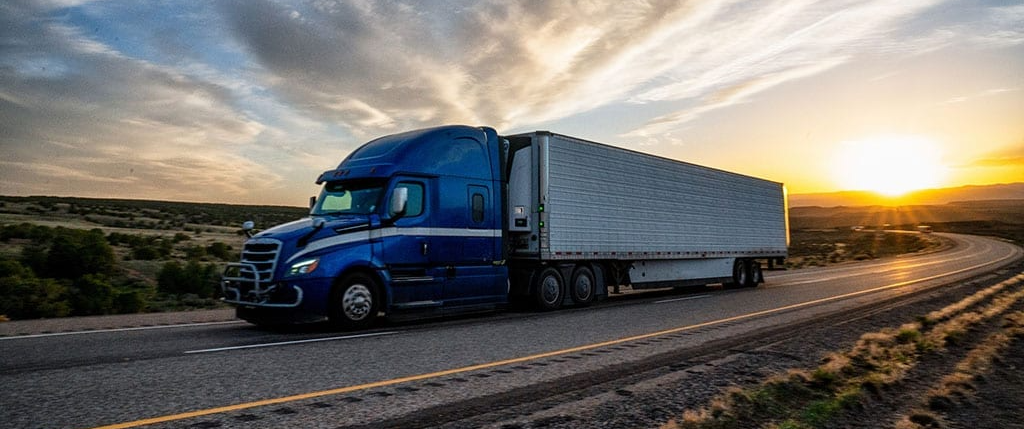LTL Shipping: What You Need to Know
LTL shipping, or "Less than Truckload" shipping, began in the early 1900s as an alternative to railway transportation. It allowed businesses to share truck space, helping reduce costs, particularly for small to medium-sized businesses that didn’t need a full truckload. Over time, the industry has become more competitive, pushing carriers to improve efficiency, transit times, and service options.
In simple terms, LTL shipping lets multiple customers share space in a single truck. Instead of one company hiring an entire truck for just a few pallets, several customers combine their shipments, making better use of the truck’s capacity.
There are two main methods for LTL shipping, though some carriers use a combination of both:
- Single Truck/Trailer Pickup and Delivery Enroute – A driver picks up and delivers shipments along a set route without using terminals. While this simplifies logistics, it limits shipment opportunities and space usage.
- Utilizing Terminals for Pickup, Linehaul, and Delivery – Shipments are consolidated at terminals for more efficient loading and broader service areas. This method allows for better use of trailer space and offers more service options but comes with higher facility and labour costs.
Most carriers set limits for LTL shipments, typically allowing up to 5 standard pallets or about 10 feet of trailer space. They also usually require shipments to be palletized or crated, making it easier to handle with forklifts or pump carts for smooth loading and unloading.
How LTL Shipping Differs from Courier Shipping
While both LTL and courier shipping involve sharing space for shipments, they serve different purposes. LTL shipping is done by truck and handles larger, palletized or crated items, whereas courier shipping can be done by road or air and focuses on smaller packages. Courier shipments have strict size and weight limits—packages must not exceed 150 lbs. or 108 inches in length and can not be palletized.
Courier shipping is often faster and cheaper for small, loose boxes, especially since it can use space on commercial airlines. LTL, however, allows you to send larger amounts but may take longer depending on the service. When deciding between the two, it’s worth comparing costs and transit times to see which option suits your needs better. Sometimes, it’s more cost-effective to ship loose boxes via courier than to palletize them for LTL, depending on your situation.
How LTL Shipping Differs from Truckload Shipping
The key difference between LTL and truckload shipping is that with truckload shipping, you hire the entire truck to transport goods from point A to point B. This is often more economical per unit when shipping a large quantity. However, truckload shipping costs increase the farther the goods are shipped, making LTL a more budget-friendly option if you don’t need a full truck.
Another difference is that truckload shipping uses full-size trucks/trailers, which may not be able to access tight or residential locations, and typically don’t have liftgates. LTL carriers, on the other hand, often use smaller trucks locally, that can navigate these areas and offer services like appointments and liftgate delivery. If you need to deliver to locations with limited access or require a liftgate, LTL might be the better option.
One advantage of truckload shipping is faster transit since it involves only one customer’s goods, heading directly to the destination. LTL shipments, by contrast, take longer due to the coordination of multiple pickups and deliveries. If speed is a priority and you have a smaller shipment, truckload shipping may still be worth considering despite the higher cost.
Key Considerations When Choosing an LTL Shipping Provider
Choosing the right LTL shipping provider can significantly impact both cost and service. Many LTL carriers focus on specific regions, pricing strategies, shipment sizes, and service offerings. They often provide more competitive rates and better service when your shipping needs align with their strengths and goals.
If your business regularly ships similar types of shipments to the same locations, partnering with one carrier that specializes in those areas may be beneficial. On the other hand, if your shipments vary in size and destination, it’s worth exploring a range of carriers to find the best fit for your needs.
When evaluating providers, take the time to understand your shipping patterns and requirements, including:
- Where you ship to and from
- How often you ship
- Typical pallet counts and weights
- Any special services required
- The importance of tracking and communication technology
- Whether your shipping volumes qualify you for discounts
Understanding these details will help you narrow down the carriers best suited to your LTL needs. Doing thorough research and leveraging industry connections can help you find the right partners.
Common LTL Pricing Models
In LTL shipping, there are three common pricing models:
1. Freight Class Pricing – This method groups goods with similar shipping characteristics for consistent pricing. This method primarily uses weight but also considers factors like density, stowability (ease of loading), handling, and liability (risk of damage or theft).
There are 18 classes, from Class 50 to Class 500, with lower classes costing less per hundred pounds. This model is widely used by large LTL carriers in the U.S. and is especially effective for small, dense shipments of up to five pallets.
Although determining the class of certain items can be tricky, once you’ve figured it out, this system is straightforward and works well for smaller shipments.
2. Per Pallet Pricing – This pricing method is simple and popular. If you ship standard-sized pallets with heavier or bulkier items, or if you want more predictable pricing, per pallet rates could work well for you. The carrier sets specific dimensions and weight limits per pallet, and as long as your shipments fit within these guidelines, you can easily determine your cost based on the number of pallets.
This method is flexible if your shipments are fairly uniform in size and weight, but it can get complicated if your shipments are odd sizes.
3. CWT Density Pricing – The CWT Density model is commonly used outside the U.S. It focuses on weight per hundred pounds but factors in the dimensions and handling of the shipment without relying on a freight class. The carrier outlines their pricing terms, including limits on liability, as well as restrictions on shipment height and length. The carrier then uses a weight factor (commonly 10 pounds per cubic foot) to determine the "billable" weight.
For example, if your shipment weighs 500 pounds but it is 60 cubic feet in volume, and the carrier’s weight factor is 10 lbs/cubic foot, the billable weight would be 600 pounds (60 x 10), even though the actual weight is 500 pounds. This method balances weight, space, and liability, making it an effective way to calculate costs.
Special Services
Standard LTL services are typically dock-to-dock, on a first-come, first-served basis. Additional services, such as residential or appointment deliveries, can add to costs and impact efficiency. It’s important to understand the availability and cost of any special services you might need when choosing an LTL provider.
Technology
A carrier’s technological capabilities can be a key consideration. Does the carrier offer tools for quoting, scheduling, and tracking shipments in a transparent and efficient manner? In today’s fast-paced world, you want to ensure the carrier’s technology aligns with your operational goals.
Qualifying for Preferred Discounts
To secure the best rates, a carrier will consider factors like your company's credit history, ease of working together, and shipment volumes that support their goals. Establishing a strong relationship with your carrier over time can help you qualify for preferred discounts.
If your business lacks the volume or history to qualify immediately, third-party service providers may offer strategies to help you access preferred rates based on their existing relationships and volumes.
At Freightxtension, we provide clients with the tools and resources they need to access real-time information and competitive LTL shipping solutions. Our extensive experience and high shipment volumes allow us to negotiate exclusive discounts for our clients.
Reach out to discover how we can help you meet your shipping goals with advanced technology, efficient tools, and data-driven insights—ensuring great rates and reliable services for all your LTL shipping needs across Canada and to and from the US!






